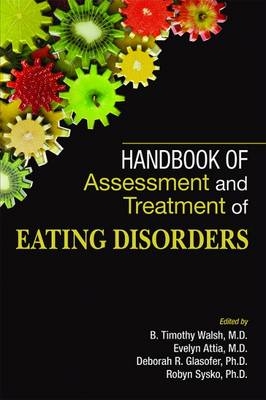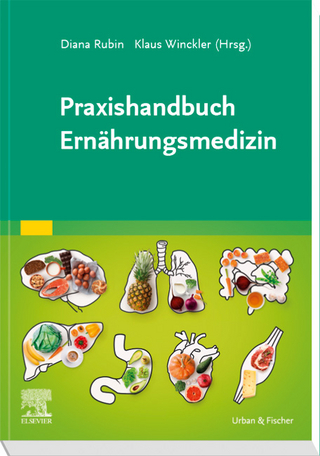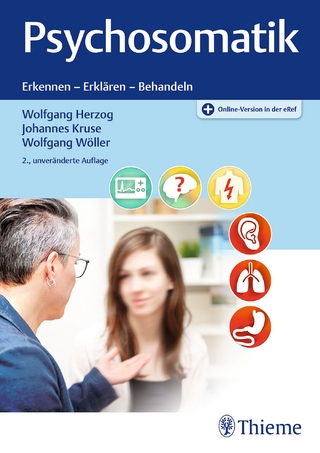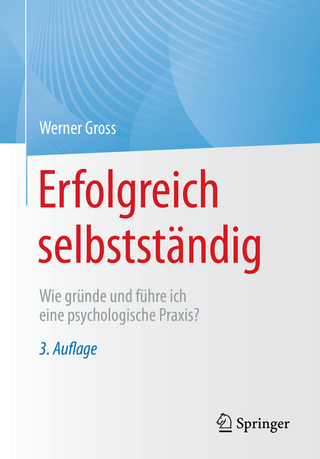
Handbook of Assessment and Treatment of Eating Disorders
American Psychiatric Association Publishing (Verlag)
978-1-58562-509-3 (ISBN)
Clinicians will find the following features and content especially useful:
• Five full chapters on assessment tools cover the evolution of measures and instruments, from the primitive beginnings to the cutting edge of new technological applications. The challenges of diagnosing feeding and eating disorders in children and adolescents are also addressed.
• Treatment chapters cover restrictive eating, including anorexia nervosa and avoidant/restrictive food intake disorder, binge eating, including bulimia nervosa and binge-eating disorder, and other eating problems, including pica, rumination disorder, and night eating syndrome.
• One chapter focuses on eating problems among men and boys, who have diverse presentations, and the motivations and body image disturbances that may differ from those typically found among females.
• Because attunement to culturally and socially patterned characteristics of clinical presentation is essential to an informed and accurate mental health assessment, an entire chapter is devoted to clinical effectiveness in multicultural and cross-cultural settings.
• Each chapter ends with key clinical points to help readers focus on the most salient content, test comprehension, and review for examinations.
Clinicians in both training and practice will find the book's up-to-date, DSM-5–compatible content to be utterly essential. The Handbook of Assessment and Treatment of Eating Disorders belongs in the library of every mental health professional practicing today.
B. Timothy Walsh, M.D., is Ruane Professor of Pediatric Psychopharmacology in Psychiatry at Columbia University College of Physicians and Surgeons, and Director of the Division of Clinical Therapeutics at New York State Psychiatric Institute, New York, New York. Evelyn Attia, M.D., is Professor of Psychiatry at Columbia University Medical Center, and Director of the Eating Disorders Research Unit at New York State Psychiatric Institute, New York, New York. Deborah R. Glasofer, Ph.D., is Assistant Professor of Clinical Psychology in Psychiatry at Columbia University College of Physicians and Surgeons. Psychologist at the Eating Disorders Research Unit at New York State Psychiatric Institute, New York, New York. Robyn Sysko, Ph.D., is Assistant Professor of Psychiatry at the Eating and Weight Disorders Program in the Department of Psychiatry at the Icahn School of Medicine at Mount Sinai, New York, New York.
Contributors
Foreword
Preface
Video Guide
PART I: Introduction
Chapter 1. Classification of Eating Disorders
PART II: Evaluation and Diagnosis of Eating Problems
Chapter 2. Eating Problems in Adults
Chapter 3. Eating Problems in Children and Adolescents
Chapter 4. Eating Problems in Individuals With Overweight and Obesity
Chapter 5. Assessment of Eating Disorders and Problematic Eating Behavior in Bariatric Surgery Patients
Chapter 6. Eating-Related Pathology in Men and Boys
Chapter 7. Eating Problems in Special Populations: CULTURAL CONSIDERATIONS
PART III: Assessment Tools
Chapter 8. Assessment Measures, Then and Now: A LOOK BACK AT SEMINAL MEASURES AND A LOOK FORWARD TO THE BRAVE NEW WORLD
Chapter 9. Self-Report Assessments of Eating Pathology
Chapter 10. Use of the Eating Disorder Assessment for DSM-5
Chapter 11. Diagnosis of Feeding and Eating Disorders in Children and Adolescents
Chapter 12. Application of Modern Technology in Eating Disorder Assessment and Intervention
PART IV: Treatment
Chapter 13. Treatment of Restrictive Eating and Low-Weight Conditions, Including Anorexia Nervosa and Avoidant/ Restrictive Food Intake Disorder
Chapter 14. Treatment of Binge Eating, Including Bulimia Nervosa and Binge-Eating Disorder
Chapter 15. Treatment of Other Eating Problems, Including Pica and Rumination
Index
| Erscheint lt. Verlag | 8.12.2015 |
|---|---|
| Zusatzinfo | 20 Figures; 27 Tables, unspecified |
| Verlagsort | VA |
| Sprache | englisch |
| Maße | 152 x 229 mm |
| Gewicht | 585 g |
| Themenwelt | Medizin / Pharmazie ► Medizinische Fachgebiete ► Psychosomatik |
| Medizin / Pharmazie ► Medizinische Fachgebiete ► Psychiatrie / Psychotherapie | |
| ISBN-10 | 1-58562-509-4 / 1585625094 |
| ISBN-13 | 978-1-58562-509-3 / 9781585625093 |
| Zustand | Neuware |
| Haben Sie eine Frage zum Produkt? |
aus dem Bereich


